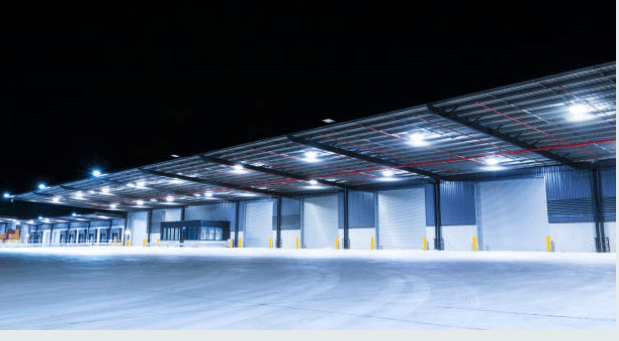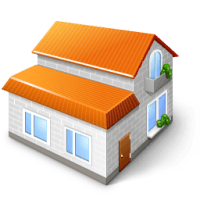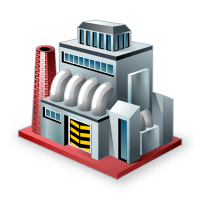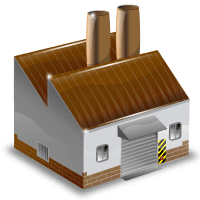Should I buy a cheap sensor light online?
If you are on a strict budget then yes, these can be replaced for a relatively low cost, but are not overly reliable so they may turn on at random times.
You may have a light you really like that matches your house, but want it to come on when you pull in the driveway, which is where Max Power team can come & install a separate sensor to control the light so you can leave the switch on all the time & when it starts to gets dark the light will automatically turn on/off for maximum convenience & safety.
Another situation is that you want to make your house more secure & by installing a LED flood lights with a good sensor or multiple sensors, you can set your place up so if there is anyone sussing out your house for a potential break in, they will in most cases move to an easier target.(see study below)
A study of convicted burglars by The University of North Carolina at Charlotte Department of Criminal Justice & Criminology found that 24% of them would consider the presence of outdoor lighting when choosing a home to target. Motion sensor lights are definitely a factor that may help prevent a burglary.
Other uses for sensors internally are to turn on your garage lights as you pull in, the hall way for a night light, the pantry, the toilet for night light & exhaust fan control, & basically anything electrical we can add a sensor to control desired operation.
So, we are talking about absolute convenience, power saving lights are on automatic function & only turn on when they need to & if you have a camera system, LED lighting will enhance the picture quality which will compliment camera systems.
Commercial / Industrial Sensor light systems

A major game changer in the commercial space is the requirement to control a percentage of the lighting with light sensors, which is a great move when you consider how many times you are in a large building with every light on & you walk down an empty corridor.
So, you have an existing building which doesn’t have to comply yet with the new compliance (AS/NZS 1680) but don’t worry it is not that difficult to retrofit sensors to your lighting to achieve additional power savings.
Whether you have had the lights upgraded to LED or you want to look to overhaul the building, we are experts at coming up with financially feasible solutions that won’t leave you with a ridiculous system that you need to get programmed every time you have a change of work areas.
The Major benefit is that the human error or habits don’t have to be considered, as nothing changes for the people on the ground & the power savings pay for these works faster than expected. When an LED upgrade is done in conjunction, you are removing maintenance from you figures for 5 years.
Examples of areas & solutions to suit existing property’s
- Toilets & changerooms – upgrade lighting to LED & have sensors in each area so the lights will turn off when no-one is there, & this includes sensors for exhaust fans to ensure they run on a suitable time without running 24/7
- Hallways & foyers – upgrade lighting to LED & install sensors to 75-50% (depending on environmental situations) of the lighting so during the day these lights will only come on when activity is detected in the area.
- Offices – upgrade lighting to LED & install light harvest system to ensure that offices with natural light have a percentage of the lighting turn off when natural light entering the building is suffice.
- Factory & warehouses – upgrade lighting to LED & install light harvest system to ensure that a percentage of the lighting turn off when natural light entering the building is suffice, this is common due to laser light on factory roof’s, or sometimes large doors that are open during operation hours ensure the light is well above safe working levels without needing all the lights turned on.
- Security & Carpark lighting – Upgrade lighting to quality LED flood lights & have dawn to dusk sensors which can stay on all night & are also capable of having times for turn off after dark to suit.
J6 of the Australian Building Code.
The Lighting Controls Sub-Committee of the Lighting Council of Australia, the peak industry association representing Australian lighting manufacturers, suppliers & retailers has stepped in to fill the information gap in the fast moving area of lighting controls and AS/NZS1680 compliance.
With timeframes of up to 5 years to update Standards, the Lighting Council of Australia has recently released a Technical News bulletin for AS 1680 that aims to show how lighting controls should be used in conjunction with interior artificial lighting.
The Technical Bulletin explains that lighting controls should be used to save energy and maintain compliance with the requirements of the Building Code of Australia1 (BCA) and Australian standards.
Specification J6.3 (d) of the Building Code of Australia – Interior artificial lighting and power control states that 95% of the light fittings in a building or storey of a building of >250m2 must be controlled by a time switch or an occupant sensing device.
Motion detectors must be capable of detecting a person before they are 1m into the space as well as other requirements for various applications and building classes. Positioning and placement of occupancy sensors is important.



